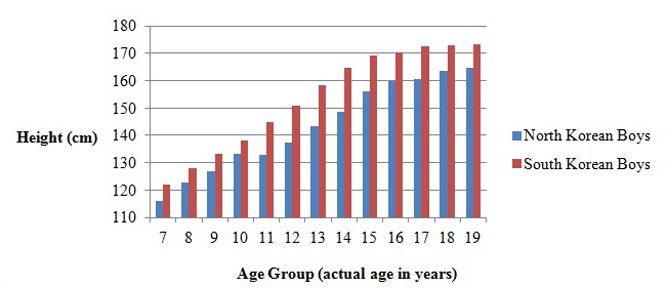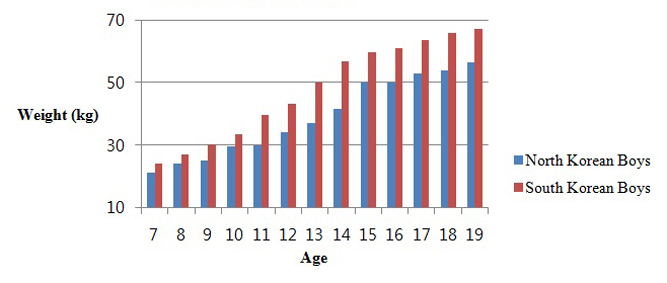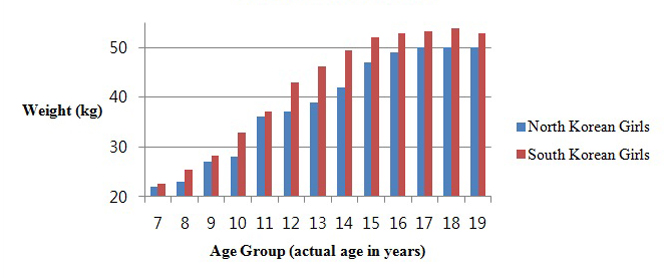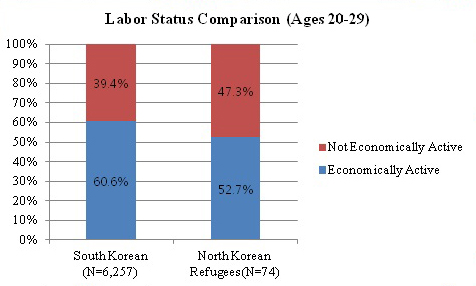South Korea can no longer be considered as an ethnically ‘homogenous’ country. It has become a diverse place with the continuous inflow of migrant workers, foreign students and businesspeople, as well as an increasing number of foreigners marrying Koreans. Among the newcomers North Korean refugees are often deemed most likely to succeed in adapting to the South Korean society due to their shared ethnicity and common language with the host population. Ironically, the existence of such social expectation “demands” that North Korean refugees to fast integrate into the South Korean society despite their extraordinary experience of hardship both in the course of escaping from North Korea and during transit through third countries. Yet many North Korean refugees profess difficulties in adapting to the South Korean society, especially the children and young adults, whose successful resettlement is of utmost interest because of its implication for the long term integration of two Koreas after reunification.
There were 26,483 North Korean refugees living in South Korea as of March of 2014, 40% of them being children and young adults aged 10 to 29 (Ministry of Unification, 2014). According to recent studies, young North Korean refugees face challenges that are different from adults’, such as gaps in physical health and socio-economic status, psychological health issues such as post-traumatic stress disorder (PTSD), and bias towards the North Korean refugees that are widely prevalent in schools and workplaces. Such obstacles translate to steep school drop-out rates and high youth unemployment rates compared to their local peers, which dramatically decrease their chance of successful resettlement. However, policies currently in place do not address these concerns, but are primarily geared towards providing short-term economic assistance and social services. We propose that the government take long term, multi-generational approach to solving social and health issues among the young North Korean refugees, and put more emphasis on addressing the latent biases and prejudices against them in the South Korean society.
Overview of Current Resettlement Support Programs
Unlike other groups of migrants1 who have settled down in South Korea recently, North Korean refugees arrive in the country with a unique status. While considered South Korean citizens by law, North Korean refugees are first screened by the government for any security threat as well as to verify whether their claim of being North Korean is genuine2. Having completed the screening process, refugees enter Hanawon, a government operated institution that house and educate the refugees for 12 weeks. The educational courses include basic vocational training, lectures about Korean history and democracy, the concept of market economy, as well as psychological counseling, career-aptitude test, and health check-ups (Cho and Kim, 2011). After the refugees leave Hanawon the state provides them with a one-time resettlement payment and housing assistance, and a “resettlement helper” is made available to the refugees for up to two years. There is no centralized agency that handles the assistance programs for North Korean refugees, which are scattered across a number of ministries and local governments. For instance, the Ministry of Employment and Labor operates a program that helps North Korean refugees by connecting them to potential employers, and the Ministry of Education operates academic assistance programs to help students adjust to school, such as extracurricular activities and mentoring programs (Kim, 2009). There are also similar programs by the Migrant Youth Foundation under the Ministry of Gender Equality and Family that assist North Korean refugee students. At the municipal and provincial levels, local authorities provide administrative assistance and often implement the programs funded and supervised by the national government.
| Name | Main Roles |
|---|---|
| Ministry of Unification | Hanawon, housing assignment, resettlement payment, family registration, Korea Hana Foundation, Hana Center |
| National Police Agency | protection service (six months) |
| Ministry of Education | National Center for Multi-cultural Education, alternative schools, preferential admission programs, tuition support |
| Ministry of Employment and Labor | vocational training, management of training agencies, employment protection |
| Ministry of Health and Welfare | social security, medical care |
| Ministry of Gender Equality and Family | Migrant Youth Foundation |
| Municipal and Provincial Authorities | residential protection, certificate issuance, and other administrative assistance |
Jang (2010), Soh (2010), Ministry of Gender Equality and Family, Ministry of Education, Korea Hana Foundation
There is no doubt that current assistance programs for North Korean refugees are generous, at least on paper, and cover almost all aspects of the resettlement process, ranging from housing and initial job placement to extra academic tutoring. But many are overlapping programs by different ministries and agencies that are not well promoted to the target population. The quantity is apparently no substitute for quality, however, as dozens of assistance programs are as a whole considered by experts to fall short in meeting the needs of the refugees (Cho and Kim, 2011; Kim and Lee, 2013; Seo, 2013). Despite the plethora of assistance programs, for most of them the duration of assistance is capped at maximum of five years, the underlying assumption being that refugees would have adapted to the South Korean society successfully by then. The current assistance scheme can be characterized in a nutshell as generous economic assistance for the short term, based on the optimistic expectation of trouble-free adaptation.
Factors Hindering Resettlement Process
Gaps in Physical Health
The difficulties that young North Korean refugees face in their newly adopted country is partly due to the fact that they start from lower physical baseline than their local peers.
Studies have shown that small physique increases the chance of being bullied (Dake et al., 2003), negatively affect one’s popularity among peers (Rosen and Underwood, 2010), and having low self-esteem (Jung et al., 2008). Having experienced food shortage in a resource deprived environment, North Korean children and young adults are significantly shorter in height and lower in weight than their South Korean peers of similar age. In Pak (2010)’s study, the growth status of 1,406 North Korean refugee children aged 6 to 20 were compared to the same age group of South Korean children. North Korean boys and girls were significantly shorter and weighed less than their South Korean peers. Average height differences between the two groups were 10.1cm for boys and 7.2cm for girls. In case of body weights the differences were 11.1kg for boys and 3.8kg for girls. Aside from the visible growth differences in height and weight between the North Korean and South Korean groups as shown in Graphs 1 and 2, the study showed that North Korean children’s puberty was delayed due to poor nutrition. Pak (2010) further explained that among many socio-demographic variables, sex, age at escape from North Korea, the year of escape, and time between escape from North Korea and arrival in South Korea appeared to be the most important factors that affected the growth status of young North Korean refugees. In fact, the study showed those who “stayed in North Korea until their early- or mid-teens were the shortest in relative terms, while those who escaped during their pre-teen years were the tallest”3. Choi et al. (2010) explained North Korean young adults continued to have poor dietary intake even after coming to South Korea due to lack of caregivers and continued economic hardship. The study showed that continued diet deficiency was problematic had important implication for their successful resettlement, since “long term poor eating could have impaired physical and neurological functions”4.
Graph 1: Median Height Comparison of North Korean Refugee Boys with South Korean Boys
 Source: (Pak, 2010, Table 2, p. 388)
Source: (Pak, 2010, Table 2, p. 388)
Graph 2: Mean Height Comparison of the North Korean Refugee Girls with South Korean Girls
 Source: (Pak, 2010, Table 2, p. 388)
Source: (Pak, 2010, Table 2, p. 388)
Graph 3: Median Weight Comparison of North Korean Refugee Boys with South Korean Boys
 Source: (Pak, 2010, Table 3, p. 388)
Source: (Pak, 2010, Table 3, p. 388)
Graph 4: Median Weight Comparison of North Korean Refugee Girls with South Korean Girls
 Source: (Pak, 2010, Table 3, p. 388)
Source: (Pak, 2010, Table 3, p. 388)
Post-Traumatic Stress Disorder (PTSD) and Social Support
North Korean refugees commonly have experiences of acute stress and trauma, especially the post-traumatic stress disorder or PTSD for short. PTSD “can occur after someone goes through a traumatic event like combat, assault, or disaster”5. North Korean refugees have typically been exposed to traumatic events, since many of them either witnessed or experienced violence within North Korea (Kang, 2011). Some were tortured or forcefully repatriated to North Korea from China while attempting to reach the south (Byun et al., 2006; Kim, 2010). Many suffered serious human rights violation, and was forced to work while in a third country (Kang, 2006; Song, 2009; Lee, 2006). It should be highlighted that 70% of North Korean refugees are female, and North Korean women are at high risk of being victims of sexual violence and exploitation as well as human trafficking either in North Korea or China According to a survey conducted by the Database Center for North Korean Human rights (NKDB) in 2012, 290 sexual violence cases were reported out of 8,703 witnesses. In a recent study on the effects of PTSD (Choi et al., 2012), two thirds of 301 North Korean refugees surveyed showed PTSD symptoms such as insomnia and feeling of helplessness that made it difficult for those with the symptoms to hold steady jobs or perform well academically.
The effects of PTSD are even more pernicious for young adults and children because episodes of trauma often constitute formative events in their lives and their personalities are still evolving at the time of traumatic incident. In order to study post-traumatic growth, which is defined as “positive change experienced as a result of the struggle with a major life crisis or a traumatic event”6, Yoon and Oh (2010) conducted one-on-one in-depth interviews with seven North Korean refugees with PTSD symptoms aged 20 to 24 who have been living in South Korea for more than seven years. The study showed the experience of trauma had far greater impact on adolescents’ psychological health compared to adults. For instance, North Korean refugee students often displayed PTSD symptoms (e.g., anxiety) that made their adjustment to school environment challenging (Jung et al., 2002). Some teachers in the study also reported that North Korean students tended to display more aggressive and violent behaviors compared to South Korean students, again indicating high levels of anxiety among young North Korean refugees.
More worryingly, the same study found that some of the participants from the study mentioned loneliness from living without the family members, indicating that there was little social support to alleviate their PTSD symptoms. As a matter of fact, many young North Korean refugees belong to households with only one parent, usually the mother. A study conducted by the NK Refugees Foundation in 2012 found that 53.5% of those surveyed belonged to single parent households, as opposed to 8.6% among South Korean households (Korean Bureau of Statistics, 2005). Since the available parent is often the single breadwinner for the family, many young refugees may not be able to form strong bonds with their single parent, increasing the often negative influence of the peers for young North Korean refugees. Studies have shown that the lack of strong bond between parents and children can lead to larger role of peer influence on children’s lives (Noller, 1994).
School Drop-out Rates and Unemployment
Young North Korean students suffer from low self-esteem vis-à-vis their South Korean peers because almost all North Korean refugees are placed in lower grades with students who are younger than them, yet they find it difficult to catch up academically with their younger peers (Jung et al., 2002; Kim and Lee, 2013). This educational gap between North Korean refugee children and their South Korean peers starts even before they reach South Korea. Because of the collapse of North Korea’s education system most young refugees were given substandard education while in North Korea, and were deprived of education during their transit period through third countries. While it is possible to transfer to age appropriate grade level, the educational gap makes it difficult for refugee children, especially the older ones, to form friendships with their South Korean peers and further their education in a formal school setting (Hong, 2002). For these reasons, North Korean children and teenagers often keep a very small circle of interpersonal relationships, either with other North Korean students or their South Korean peers who are also having trouble adjusting to school (Jung et al., 2002).
These difficulties that young North Korean refugees experience translate to relatively high rates of school dropouts. As shown in the Graph 5, middle and high school students tend to drop out more than elementary school students. The school dropout rate for North Korean students in middle and high schools combined ranged between 4.2% and 7.5% in the three years prior to 2014, compared to 1.2-1.3% among South Korean students in the same period. Although these figures might seem low compared to some other countries, they should be interpreted in the light of the fact that South Korean students are automatically promoted through grades from elementary to high school.
The educational gap and difficulty in integrating to the school environment extends to higher education, which they enter through preferential admission. North Korean refugee students in college have difficulties keeping up with the course curriculum and socializing with their South Korean classmates. A North Korean college student, Kim Seong-cheol, said in an interview with the New York Times, “I felt like someone from the 1970s who was put on a time machine and dropped in the 21st century”7. In fact, more than half of North Korean refugee students in college eventually drop out of college, increasing concerns that North Korean refugees will remain as “permanent underclass” in the South Korean society (Fackler, 2012).
The challenges experienced by young North Korean refugees in schools continue to the workplace. Graph 6 shows the labor force participation rate of North Korean refugees of all age groups. Despite the positive change in the overall employment rate, the labor force participation rate for young North Korean refugees in particular is significantly lower than that of their South Korean peers. Among 39 North Korean young adult refugees aged 20-29 surveyed by the Database Center for North Korean Human rights (2013), their labor force participation rate was 55%, which was substantially lower than that of their South Korean counterparts, which was 62.8% (Statistics Korea, 2013).
Young North Korean refugees often experience cultural conflict in workplaces in the form of language barriers and difficulties in interpersonal communications. According to a study by Cho et al. (2006) on the North Korean refugee population’s cultural conflict, refugees faced difficulties in abiding by the rules in the office, the amount of work, and difficulties in completing given tasks due to the inability to use the computer. The same study mentioned that North Korean refugees regard their South Korean colleagues’ indirect way of communicating as ‘hypocritical’ because they were used to openly talking about their own and others’ wrongdoings through mutual- and self- criticism sessions that are deeply embedded in North Korean society. Moreover, North Korean refugees in the workplace are cautious not to speak in their North Korean accent as not to reveal their background and identity to their South Korean colleagues (Choi and Park, 2011).
Graph 5: Drop-out Rates of North Korean Refugee Students
 Source: 2012 North Korean Refugee Students Statistics, Ministry of Education. 2013 North Korean Refugee Students Statistics, Ministry of Education
Source: 2012 North Korean Refugee Students Statistics, Ministry of Education. 2013 North Korean Refugee Students Statistics, Ministry of Education
Graph 6 : Labor Status Comparison
 Source: 2012 North Korean Refugee Economic Activities Trend (Database Center for North Korean Human Rights), 2012 Economically Active Population by Age (Statistics Korea, 2013)
Source: 2012 North Korean Refugee Economic Activities Trend (Database Center for North Korean Human Rights), 2012 Economically Active Population by Age (Statistics Korea, 2013)
Social Prejudice and Stereotypes of North Korean Refugees
Most studies on North Korean refugees focus on the refugee population’s adaptation to the society and evaluation of government policies (Yoon, 2009), and not much has been done on the South Korean population’s attitude towards the refugees (Lee and Son, 2011). A cursory reading of the public attitude towards the North Korean refugees shows a deteriorating trend. In 2005, a poll survey conducted by the East Asia Institute (EAI) showed 75% of the participants expressed some degree of closeness towards the North Korean people, but the proportion dropped to 55.2% in the same EAI poll taken in 2010. Lee and Son (2011)’s study showed that South Koreans in their 20s as a whole had the most negative attitude towards North Korean refugees, in contrast to the sixty-or-older group. This generational difference is likely due to the fact that the younger generation of South Koreans no longer consider North Koreans as part of the same nation, as the two Koreas have been separated for more than half a century. As the result, many North Korean refugees experience mistrust, unfair treatment, ostracism, and discrimination, even outright hostility, creating serious challenges to the prospect of successful resettlement (Choi and Kim, 2013).
Prevailing social prejudice towards North Korean refugees are almost never overt, but nonetheless affect the refugees’ behaviors in subtle manners. A survey by the Korean Educational Development Institute (KEDI) (2013) showed that out of 429 elementary and middle school North Korean refugee students, 10.7% of them reported being discriminated against or socially ostracized due to the fact that they were from North Korea. 54% of them also reported that they would not let their South Korean peers know they came from North Korea if they were given the chance to transfer to a different school. Experts also point out that teachers who most interact with North Korean refugee students most are more often than not inadequately trained to handle their needs, and as the result they tend to cause more harm than good (Kim and Lee, 2013; Kil et al., 2003; Park, 2006). Similarly, North Korean refugees in the workplace report having similar experience of social discrimination by their co-workers and superiors. For example, one employer whose employee is from North Korea expressed fear that his employee might kill others if provoked emotionally (Choi and Park, 2011). This prejudice stems from hearing or watching news that in North Korea, public executions are common. Even after taking into account the inevitable cultural misunderstandings in when dealing with recently arrived North Korean refugees, South Koreans’ strong prejudice and stereotyping of North Korea and its people are widespread and well entrenched. As the result, many North Korean young adults and children feel alienated by the South Korean society, and find their South Korean peers difficult to get along with (Kim and Lee, 2012; Lee, 2001; Yoo et al., 2004, Jeon, 2000). Because North Korean children and teenagers are in a transitional period in terms of their identity formation they often feel insecure about their social positions in the society (Kim and Lee, 2013). As the result, refugee children in schools are often afraid to speak in North Korean dialect and hesitant to reveal where they originate, fearing that their South Korean peers may make fun of them (Jung et al., 2002).
Policy Implications and Recommendations
Young North Korean refugees face many challenges when they arrive in South Korea, which are patently different from those of their parents. Despite the government’s continuing efforts at helping the young refugees with resettlement, problems such as unemployment and high school dropout rates continue unabated. The fact that generous government assistance policies are not bearing fruits is of increasing concern, raising the specter of North Korean refugees as a group becoming a permanent underclass in the South Korean society.
Our criticism with the current government policy lies with the fact that assistance policies are too focused on short term economic help. Generous in benefits and coverage at least initially, the bulk of state assistance for North Korean refugees ends within 5 years of refugees’ arrival in South Korea. Help is still available afterwards, but the long term assistance is no longer of pro-active format, and it requires the refugees to choose from a complex basket of programs and organizations. It is understandable that many refugees find them confusing and hard to use. It is especially telling that many young North Korean refugees profess what handicap them in school and at work are of more subtle and intractable kind, such as difficulties in socializing with their peers and the seemingly unsurmountable levels of academic and economic competitiveness in the South Korean society. It should also be noted that many show symptoms of PTSD, are on average have smaller physiques, and often belong to single parent households. These are issues that economic help alone cannot solve.
In order to formulate an effective policy framework to lend assistance to North Korean refugees, it should first be acknowledged that both the South Korean government and society have unrealistically high expectation of the refugees. Shared ethnicity and language certainly help, but as mentioned before these factors alone do not make the refugees successful members of the society. High social expectation not only leads to the cutting off of aid relatively early, but perversely shifts the blame for the refugees’ failure to adapt from the South Korean government and society to the refugees themselves, who are seen as incapable of taking advantage of generous assistance provided. In the process, social and psychological factors that are the actual culprits behind the difficulties that the refugees face are ignored, such as the fact that many young refugees come from a background of trauma and deprivations. Time and patience are most needed for their long term success in overcoming these issues.
Therefore we recommend the government to take a longer, holistic approach to assisting young North Korean refugees. The government should design a unified policy framework for the long term support and assistance of the refugees, managed by a centralized authority that oversees dozens of programs scattered across multiple agencies and ministries. It should also be prepared to extend assistance to future descendants of North Korean refugees.
In addition, the South Korean society should confront the fact that its bias and prejudice towards the refugees are widening the gap between them and the society even further. Through long-term empowerment and support, North Korean refugees will gain opportunities to integrate into the country and South Korean citizens’ attitude and common misunderstanding will be adjusted as well. It is essential to achieve mutual understanding and cooperation by the South Korean society and North Korean refugees, so that North Korean children and young adult refugees do not feel excluded from their new home.
References:
- Byun, J., Jung, N., Kim, Y., and Yoo, Y. (2006). Torture experience of North Koreans settled in South Korea. Studies of Koreans Abroad, 16, 81-109.
- Cho, J., Lim, S., and Jung, J. (2006). The cultural conflict and possible solution for integration of North Korean defectors. Korean Women’s Institute Institute of Unification
- Cho, D. and Kim, Y. (2011). A study on settlement service for North Korean defectors. Journal of Korean Public Police and Security Studies, 8(2), 25-50.
- Choi, S. K., Park, S. M., and Joung, H. (2010). Still life with less: North Korean young adult defectors in South Korea show continued poor nutrition and physique. Nutrition Research and Practice, 4(2), 136-141.
- Dake, J., Price, J., and Telljohann, S. (2003). The nature and extent of bullying at school. Journal of School Health, 73(5), 173-180.
- Database Center for North Korean Human Rights (2012). 2012 North Korean refugee economic activities trend. Seoul: Database Center for North Korean Human Rights.
- Fackler, M. (2012, July 12). Young North Korean defectors struggle in the South. The New York Times. Retrieved from http://www.nytimes.com/2012/07/13/world/asia/young-north-korean-defectors-struggle-in-the-south.html?pagewanted=all
- Hong, D. (2002). A study of living adaptation of North Korean adolescent defect. Seoul National University of Education, Seoul, Korea.
- Jang, I. (2010). A study on the North Korean refugees promote adaption in the South Korean society. Journal of Korean Policy Studies, 10(3), 367-539
- Jeon, W. T. (2000). For the unification of people. Seoul, Korea. Oreum. Jeon, W., Eom, J., and Min, S. K. (2013). A 7-year follow-up study on the mental health of North Korean defectors in South Korea. Journal of Traumatic Stress, 26, 158-164.
- Jung, J., Jung, B. and Yang, K. (2004). The adjustment of North Korean refugee youths in South Korean schools. Journal of Research of Unification, 16(2), 209-239.
- Kang, C. (2006). The relationship between the stress relief method and mental health of North Korean female refugees residing in China. Journal of Women’s Studies, 41(3), 81-106.
- Kang, Y. (2011). Analysis of factors that influence social adaptation of North Korean refugees. Sungkonghoe University, Seoul, Korea.
- Kim, H. K. (2010). A study on the recovery predictive factors for North Korean refugees with torture experience. Journal of Association of Social Welfare Studies, 41(3), 81-106.
- Kim, J. Y., Choi, J. H., and Ryou, W. J. (2012). Impact of PTSD on North Korean defector’s social adjustment in South Korea – Focused on the moderating effect of resilience and social interaction. Korean Journal of Social Welfare Studies, 43(4), 343-367.
- Kim, M. and Lee, D. (2013). Adaptation of North Korean adolescent refugees to South Korean society: A review of literature. Journal of Rehabilitation Psychology, 20(1), 39-64.
- Korean Educational Development Institute. (2011). A longitudinal study of North Korean migrant youth in South Korea (II). Seoul, Korea: Lee, H.K.
- Korean Educational Development Institute. (2012). A longitudinal study of North Korean migrant youth in South Korea (III). Seoul, Korea: Lee, K. J.
- Lee, K. (2011). Analysis of types of maladjustment problems of North Korean adolescent refugees to South Korean society. Korean Adolescent Development Institute.
- Ministry of Education (2012). 2012 North Korean refugee students statistics. Ministry of Education.
- Ministry of Education. (2013). 2013 North Korean refugee students statistics. Ministry of Education.
- National Center for PTSD. (n.d.). Retrieved from http://www.ptsd.va.gov/public/PTSD-overview/basics/index.asp
- Noller, P. (1994). Relationships with Parents in Adolescence: Process and Outcome. In R. Montemayor, G. Adams, & T. Gullotta (Eds.), Personal Relationships during Adolescence (37-78).Thousand Oaks, CA: Sage.
- North Korean Refugees Foundation. (2012). A survey of North Korean adolescent refugees. Seoul, Korea.
- Paik, H., Kil, E., Yoon, I., and Lee, Y. (2007). The study on the readiness of adaptation that influences the psychological adaptation of North Korean adolescent refugees in South Korea. Studies on Korean Youth, 18(2), 183-211.
- Pak, S. (2010). The growth status of North Korean refugee children and adolescents from 6 to 19 years of age. Economics and Human Biology, 8, 385-395.
- Park, S. and Choi, N. (2011). A study on educational needs for North Korean migrants’ stable professional life: The necessity of approach to humanities education. Interdisciplinary Journal of Adult & Continuing Education, 14(2), 107-135.
- Posttraumatic Growth Research Group. (n.d.). Retrieved from http://ptgi.uncc.edu/what-is-ptg/
- Rosen, L. and Underwood, M. (2010). Facial attractiveness as a moderator of the association between social and physical aggression and popularity in adolescents. Journal of School Psychology, 48, 313-333.
- Seo, Y. (2013). Two fundamental problems of current supporting policy of North Korean refugees and multicultural solution through social integration. Journal of Korean Political Science Association, 21(2), 301-327.
- Soh, C. (2010). A study on good governance of support policy for North Korean defectors: Focusing on employment policy. Journal of East and West Studies, 22(1), 145-172
- Sohn, A. and Lee, N. (2012). A study on the attitude of South Koreans towards North Korean defectors: Focusing on national identity and multi-cultural acceptability.Journal of Asia Pacific Studies, 19(3), 5-32.
- Song, K. (2009). The problems and solutions of North Korean refugees’ adaptation to South Korean society. Journal of Korean Public Police and Security Studies, 1-40.
- Statistics Korea (2005). Students’ family structure. kostat.go.kr. Retrieved July 1, 2014 from http://kosis.kr/statisticsList/statisticsList_01List.jsp?vwcd=MT_ZTITLE&parentId=A#SubCont
- Statistics Korea (2013). Economically active population by age. kostat.go.kr. Retrieved from http://kosis.kr/statisticsList//statisticsList_01List.jsp?vwcd=MT_ZTITLE&parentId=A#SubCont
- Yoo, K., Bang, E., and Han, Y. (2004). A Case Study on School Achievement and Social
Adaptation of North Korean Refugee Children & Adolescents. Journal of Korean Home Management Association, 22(5), 185-196. - Yoon, I. (2009). North Korean migrants. Paju, Korea: Jipmoondang.
- Yun, J. and Oh, Y. (2010). A study on experience of Posttraumatic Growth among North Korean refugee adolescents in South Korea – cases of university students-. Journal of Research of Adolescence, 17(12), 49-82.
The views expressed herein do not necessarily reflect the views of the Asan Institute for Policy Studies.
- 1
E.g., Vietnamese and Filipina brides; South Asian laborers
- 2
There have been instances in the past of Korean Chinese passing as North Korean refugees in order to obtain automatically South Korean citizenship
- 3
Pak, S. (2010). The growth status of North Korean refugee children and adolescents from 6 to 19 years of age. Economics and Human Biology, 8, p. 392.
- 4
Choi, S. K., Park, S. M. & Joung, H. (2010). Still life with less: North Korean young adult defectors in South Korea show continued poor nutrition and physique. Nutrition Research and Practice, 4(2), p.140.
- 5
National Center for PTSD. (n.d.). Retrieved May 20, 2014 from http://www.ptsd.va.gov/public/PTSD-overview/basics/index.asp
- 6
Posttraumatic Growth Research Group. (n.d.). Retrieved July 23, 2014 from http://ptgi.uncc.edu/what-is-ptg/
- 7
Fackler, M. (2012, July 12). Young North Korean defectors struggle in the South. The New York Times. Retrieved from http://www.nytimes.com/2012/07/13/world/asia/young-north-korean-defectors-struggle-in-the-south.html?pagewanted=all

 Facebook
Facebook Twitter
Twitter